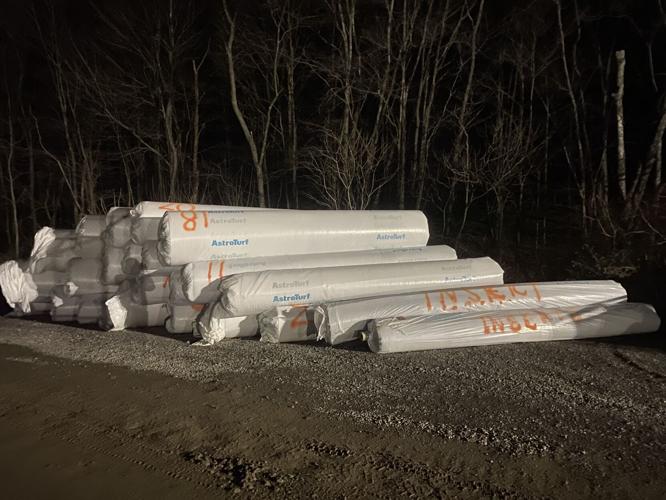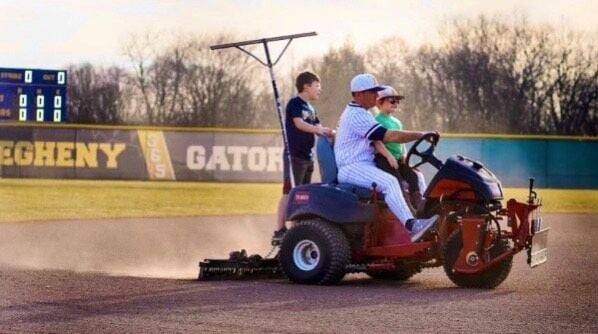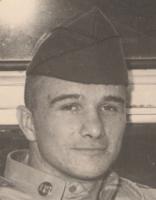Throughout the 119 years of baseball history at Allegheny College, players have dug their cleats into sand, silt and clay.
Now, the team will get to experience what it is like to consistently compete on an artificial infield next month when they play their home opener against Houghton College. The shift to synthetic turf and dirt has fueled chatter across the infield and throughout the Allegheny athletic community.
“I think there is a snowball starting to form,” said head baseball coach Brandon Crum. “It is starting to roll downhill with excitement because it is starting to get real.”
This design has been in the making for years. It is not a walk in the park to find the funds, develop designs and take care of all other logistical measures to bring a project as significant as this to fruition, according to director of athletics and recreation Bill Ross.
Despite the longevity of the process, the renovation has moved swiftly from dream to reality.
When Ross was in charge of the facilities at the college, he saw all the problems of playing baseball and preparing for home games in the northeast. The college knew change was needed — and soon.
“I have tons and tons of pictures showing (players) wading in over ankle-deep water, trying to get water off the field,” Ross said. “They were out there shoveling the snow off the tarp, dumping it and making a huge mess all around the perimeter of the field.”
Many challenges of field maintenance, especially those caused by inclement weather, will be resolved with the new field.
One recent stat demonstrates the challenge of late winter and early spring playing conditions in Meadville. Last year, the team was voted into Division III baseball’s top 25 more times than it managed to practice outside.
The field will be named after former head coach Robert Garbark, who was inducted into the Allegheny Hall of Fame in 1980. A few of his many accolades include being the first All-American at the college, earning the All-Tri-State Award in basketball and football and ranking third for 45 years among Allegheny’s all time scoring list as a fullback.
Garbark also played in the major leagues for seven seasons. He spent time in Cleveland, Boston and Philadelphia. During the prime of his career he was a member of the Chicago Cubs championship team in 1938. He totaled a career .248 batting average across 145 games, according to baseball-almanac.com.
When his playing days were over, Garbark returned to his alma mater, serving as head baseball coach from 1947 to 1978. He led the team to the top of the Presidents’ Athletic Conference on numerous occasions. Under his reign the Gators seized 14 of 20 PAC titles between 1955, when the conference was founded, and Garbark’s retirement, including a run of five straight championships from 1960 to 1964.
Athletes said they cherished playing for him and the field renovation project was started to honor the footprints he left behind, forever remembered by generations of the Allegheny family as an icon.
“(He was) a coach that really is legendary in the sense of the love that everyone who played for him had,” Ross said. “Once you start uncovering all that and looking into it, it is like, ‘Yes, this is a person that deserves to be honored on our campus.’”
It was by chance that Ross was with an alumnus one afternoon and happened to mention Garbark’s name. Ross explained that someday the school would like to do something for Garbark by upgrading the field. The alumnus jumped on it right away, saying he would donate funds to the cause if this idea came to life.
From there, things took off. Many other alumni, former players of Garbark and more recent graduates were willing to step in and make sizable contributions to the baseball program, providing the main source of capital for the new synthetic infield to be installed.
Crum has been working behind the scenes to involve alumni and was regarded by Ross as an exceptional coach who was eager to lend his hand in the fundraising efforts. Crum recruited 12 alumni who represent each five-year period of the program’s history from 1970 to 2020. Together, they have worked strategically to connect with additional former teammates to get as many people on board as possible.
“I recognize that they would not be willing to advocate for this kind of commitment if they did not believe in me and the vision I have for the program,” Crum said. “I cannot express to you how much their support motivates me to see this project through. We are building a beautiful baseball park. I know they will be proud of the enhancements.”
Renovations started in November 2022, with Playing Surface Solutions beginning their work heading into winter. Work has continued through tough weather conditions to ensure the field will be ready to go in March and the first strips of turf were installed last week.
In addition to the infield improvements the dugouts will also be pushed back into the surrounding hill that engulfs half of the ballpark. Furthermore, the backstop will no longer be supported by a damaged chain-linked fence, but will instead encompass a more professional look similar to a professional field.
“That is one of the most picturesque settings for a baseball field that I have seen,” Ross said. “It is going to be a great spectator-friendly facility and very nice to look at.”
The renovation plans have stirred up nostalgia among team members, who will never forget their own experiences maneuvering through their swamp.
During tarp duties last season, team members’ class commitments left them without enough players to pull the cover across the infield. Crum had to get involved. While everyone worked to make sure the infield would be protected from an impending storm, a gust of wind picked up and lifted Crum off his feet.
“I just remember holding the tarp and looking over and seeing coach Crum in the air,” said starting pitcher Conor Deasy. “He did not have the most graceful fall down.”
For Crum, dragging the dirt after games and practice allowed him to collect his thoughts before addressing the team. It was a time for him to reflect, but he also took pride in manicuring a natural field, despite the Meadville climate’s competing agenda.
During one of the final home games last season — which ended up being one of the last games the Gators would ever play on the dirt field — a photographer captured a picture of Crum with his son and daughter dragging the field together. After years of doing it by himself because the kids were too young, the photo provided him with a scene he will never forget.
As the team returns to the PAC for the first time in almost 40 years and nears completion of the renovations, hopes are high for the team to perform well. They are considered by many among the league as conference favorites, but it remains to be seen whether they can back up their high expectations with good play on the field.
“I think this shows signs of strength and where we are going,” Crum said. “This field and this enhancement are going to prove to be one of the better investments we have made here at this institution on the athletics side. It gives the whole Robertson Complex a fresh look. When you pull around the bend you are going to see this brand new baseball field and it is going to give people excitement for what is to come on the diamond this spring.”




























Commented
Sorry, there are no recent results for popular commented articles.